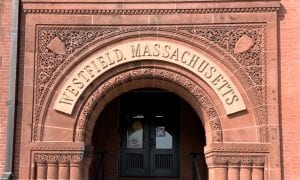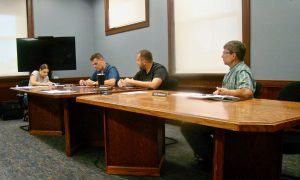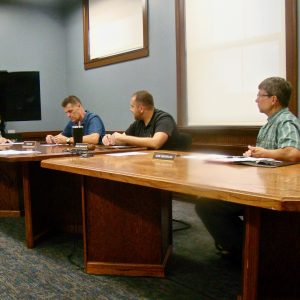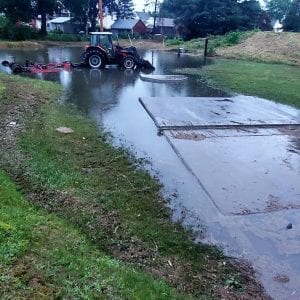WESTFIELD – The Water Commission voted in December to raise water rates for residential and commercial customers by more than 10 percent, about a $30 increase for the average residential water customer. The other shoe to drop, in this case, is that the 10.2 percent increase approved Dec. 5, 2012 is only the first of several rate hikes contemplated over the next few years.
The board and Water Resource Department staff presented data on the department’s revenue and projected debt service, which will increase dramatically over the next several years, as major infrastructure projects are pushed into the pipeline. Much of the projected work has been deferred for years, if not decades, but has deteriorated to the point where major infrastructure investment is needed to keep the system functional
The meeting room was packed, primarily with city officials, including five City Council members who will be called upon to approve the bonds needed to reconstruct the aging water distribution (220 miles of mains and pipelines) and a number of other city officials. Only three private residents attended the public meeting.
A photo of a downtown water main, stamped 1874, was shown to underscore the need to upgrade the distribution system.
“It’s not that unusual to find lines that old throughout the city,” Water Resource Superintendent Dave Billips said. “Mineralization and sedimentation reduce the internal diameter in the mains which reduces the flow.”
City Engineer Mark Cressotti said many older downtown neighborhoods are serviced by four-inch mains, but that the actual capacity of those lines is a one-inch diameter because of the sediment build-up over the decades. Those clogged lines not only provide residents with domestic water, but are also providing fire -protection through hydrant connections.
“There was a major fire of a commercial building and when the Fire Department opened hydrant, nothing came out. So it’s a public safety concern,” Cressotti said.
Billips said that historically water distribution systems were installed, not for domestic use, but for fire protection, after major conflagrations min urban centers such as San Francisco.
“The main reason of bringing water into the city is fire protection,” Billips said. “Our job is to maintain the hydrants.”
Westfield has a unique water distribution system, a hybrid of surface water, primarily from the Granville Reservoir, and well water drawn primarily from the Barnes Aquifer. Each source contributes about half of the city’s water, but each has very different cost centers.
The department has eight near-term projects totaling $12,157,000 and six pending projects, planned over the next seven years, totaling $10,950,000. That $23 million expenditure will double the department’s debt service, the primary reason for rate increases
The department is in the process of initiating $6.5 million in improvements and repairs to the Granville Reservoir, built in 1929. The spillway of the earthen dam collapsed during Tropical Storm Irene, with an estimated cost of repair at $1.9 million. The Federal Emergency Management Agency will reimburse the city for $300,000 of that repair cost when the work is completed.
The earthen dam, which weeps water through a tile drain system, is also in need of repair, with a price tag of $1 million and a larger pipeline connecting the reservoir to the water treatment plant in Southwick comes with a projected cost of $2.8 million. Work to increase the capacity of the treatment plant and install hydro-electric generation which will power the plan, it projected at $800,000.
Other short-term projects include installation of new meter technology, $3.35 million, and the downtown Gaslight Project at more than $1.5 million. The state has approved a $700,000 reimbursement for the repair or replacement of the 2.7 million gallon East Mountain storage tank.
The longer-term projects planned over the next seven years include $6,690,000 to replace water mains throughout the city; $570,000 to repair the department’s other six dams, $1 million for repair to the other three water storage tanks, which pressurize the distribution system; $890,000 for repair and upgrades to the city’s wells, $455,000 for hydrant replacement, and $1,345,000 for reservoir maintenance, such as dredging and algae control systems.







